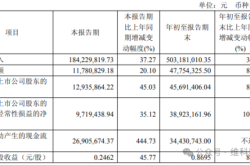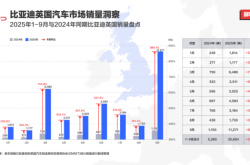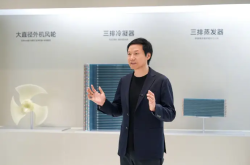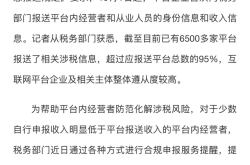AI + Short Dramas: Imperfection as the Core Logic of Emotion
![]() 03/14 2025
03/14 2025
![]() 471
471
The year 2025 may mark a pivotal turning point for short dramas. On one hand, the industry is grappling with a bottleneck, crying out for fresh variables. Jianteng Engine's data reveals a 18% year-on-year decline in completion rates for short dramas in January 2025, and a drastic drop in users' average daily viewing time growth from 99% in 2024 to just 11.3%.
On the other hand, the continuous evolution of large AI models, particularly advancements in text-to-video and image-to-video technologies, has fueled a leap in AI-driven film and television creation. As the once promising "blue ocean" morphs into a fiercely competitive landscape, short dramas stand on the brink of transformation, with AI emerging as a key catalyst.
01. AI Revolutionizes Short Drama Production: From Script Generation to Intelligent Editing
Amidst the aesthetic competition in the short drama sector, technology continues to march forward, ushering in a flood of AI-generated short dramas into the market.
Douyin's 9527 Theater, for instance, premiered its first AI animated short drama, "The Unknown Secret Agents," during the Spring Festival. Shortly after, Kuaishou's Xingmang Short Drama unveiled the trailer for its AI-driven series, "New World Loading." Hongguo followed suit with its industrial-grade AI short drama, "Fantasy: Starting with Playing the Erhu," and Fengmang didn't lag behind, launching China's first AI Northeast fantasy short drama, "Mysteries of Xing'anling."
This surge is fueled by the rapid development of text-to-video technology driven by large AI models over the past year. From OpenAI's Sora's impressive image generation capabilities to breakthroughs in video generation by domestic giants like Kuaishou's Keling AI and Douyin's Jimeng AI, AI technology is redefining content creation boundaries at an unprecedented pace.
Examining individual stages, AI has permeated various facets of short drama production.
In planning and screenwriting, AI writing tools swiftly generate script outlines and plots, optimizing them based on market feedback. Deepseek's script generation function, for example, automatically crafts a complete first draft using user-input keywords and plot frameworks. This not only slashes creation time but also refines the script structure through data analysis to better align with audience preferences.
In art and special effects, AI's application in scene construction and special effects significantly reduces the workload on traditional art and special effects teams. AI can generate realistic virtual scenes and effects, minimizing the need for real-world setups and post-production work.
In directing and editing, AI technology streamlines the work of directors and editors. AI can identify key plots and emotional atmospheres, perform intelligent editing, and select optimal shot pacing and transitions.
02. AI and Short Dramas: A Natural Symbiosis for "Short, Flat, and Fast" Thrills
AI's rapid integration into short drama production is backed by technological breakthroughs, particularly in large AI video generation models, thanks to advancements in deep learning, natural language processing, and computer vision. Models like "Jimeng" and "Keling" offer infinite possibilities for AI short drama creation with their unique algorithms and vast data libraries.
More importantly, AI technology inherently aligns with the production needs of short dramas. The video duration processing capabilities of large AI models complement the brevity of micro-short dramas, whose commercial appeal lies in their concise and fast-paced narratives, typically spanning 1-5 minutes. This format bridges the gap between long-form videos and short videos, featuring rapid editing and short shot durations, making it ideal for multi-shot + short-shot production schemes.
Moreover, at the production level, AI short dramas excel in compressing cycles and reducing costs. In today's competitive short drama market, speed is crucial. To capitalize on trending topics and swiftly adapt to market changes, producers must continually compress production cycles and enhance efficiency. The introduction of large AI models perfectly addresses this need.
As these models continue to lower video generation costs, enabling full-process production within days, the film and television industry realizes that the digital era's equivalent of Foxconn has arrived at the studio door, armed with its computing prowess. These AI engines, equipped with tens of billions of parameters, devour the entire workflow from script generation to intelligent editing, iterating weekly.
03. The Final Hurdle for AI and Short Dramas: Mitigating the "AI Flavor"
However, like any novelty, AI short dramas are not flawless. Observing popular AI short dramas closely, setting aside the "AI production" label, reveals notable shortcomings.
Firstly, in terms of video quality and realism, AI-generated content often suffers from the "Uncanny Valley Effect," particularly in character expressions and movement coherence, which can appear unnaturally incongruous.
Secondly, even with "human-machine collaboration," AI short dramas require extensive rapid editing to avoid linear movement issues, resulting in a clear gap in emotional resonance and narrative tension compared to traditional works.
Furthermore, MIT Media Lab's neuroimaging research uncovers a deeper concern: when viewers watch AI short dramas, the prefrontal cortex activation level is 37% lower than when watching human-created content. This indicates that while algorithm-generated conflicts adhere to dramatic theory, they fail to elicit genuine emotional responses, exposing the fatal flaw in current AI creation—algorithms form an "industrial assembly line aesthetic" by precisely replicating data templates.
04. Conclusion: Imperfection as the Core Logic of Human Emotions
Perhaps, it's only when AI learns to weave imperfect tears into its scripts that it will truly grasp human nature.
Current AI creation is rooted in a mathematical model of perfection. ChatGPT-generated scripts maintain a tight logical loop, and Stable Diffusion-drawn images adhere to the golden ratio. This precision underscores machines' essence: deconstructing human emotions into calculable parameters and simulating joys, sorrows, anger, and happiness through probability distributions, akin to drawing Mona Lisa's smile with a compass.
However, human brilliance shines precisely through imperfections. Shakespeare allowed Hamlet's "To be, or not to be" soliloquy to contain grammatical errors, and Chekhov infused "The Cherry Orchard" with ill-timed laughter. These "flaws" are actually mirrors of human authenticity. When AI begins to understand that tears shouldn't be evenly distributed and algorithms realize the protagonist's hesitation needs to break narrative conventions, it signifies that the machine has grasped the nonlinear nature of emotion. This breakthrough isn't a code victory but a demonstration of humans teaching silicon-based life to embrace existence's contradictions.
Thus, the greatest revelation of this industry transformation may lie in redefining "creation." As AI generates perfect structures, imperfect emotional tremors become rare. When algorithms predict all trends, innovations deviating from data curves are truly valuable. The future of short dramas belongs not to technological determinists or nostalgic fundamentalists but to "amphibious species" who uphold storytelling amidst the digital tide. They are authoring not just the entertainment industry's evolutionary history but a meta-narrative on human-technology coexistence.
- End -








